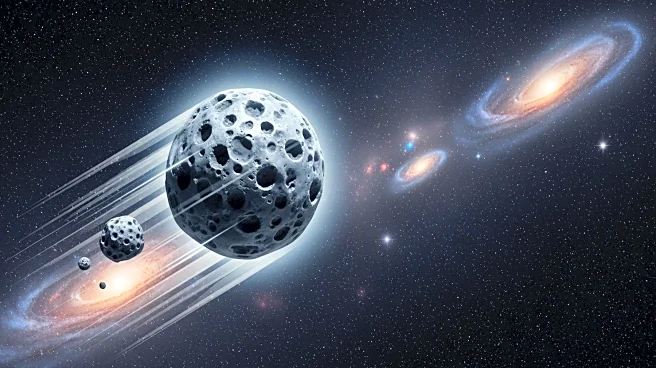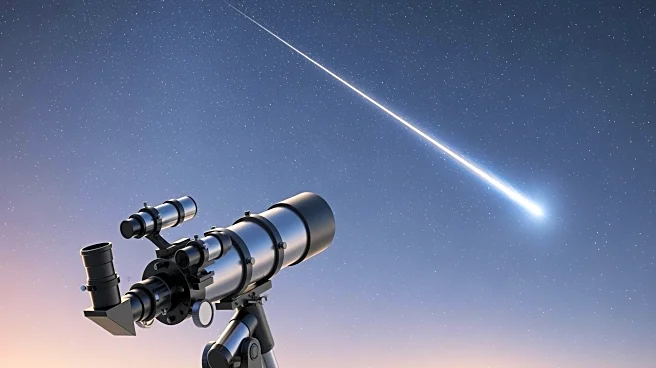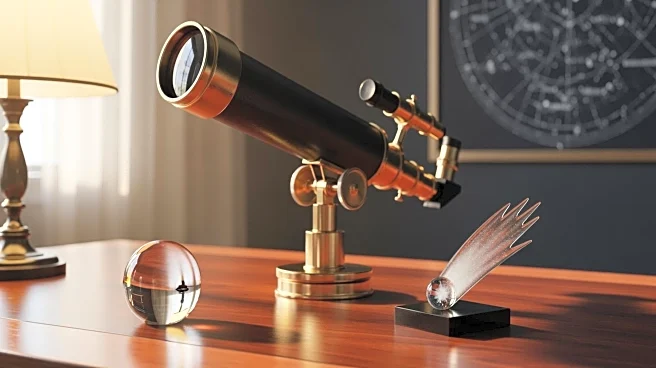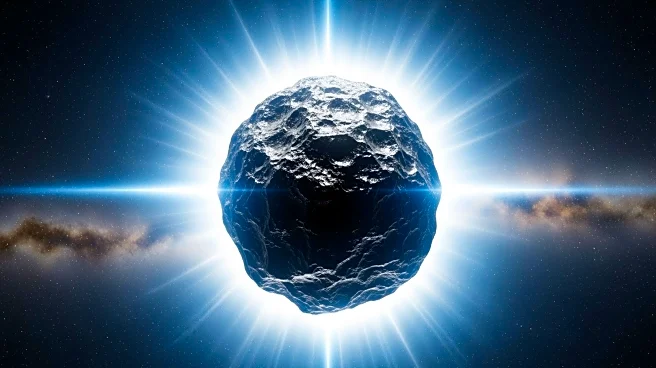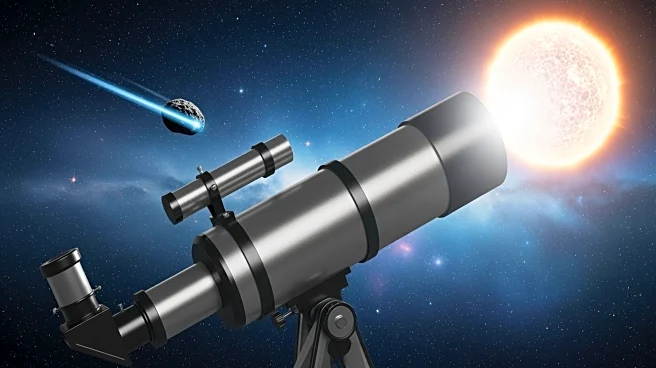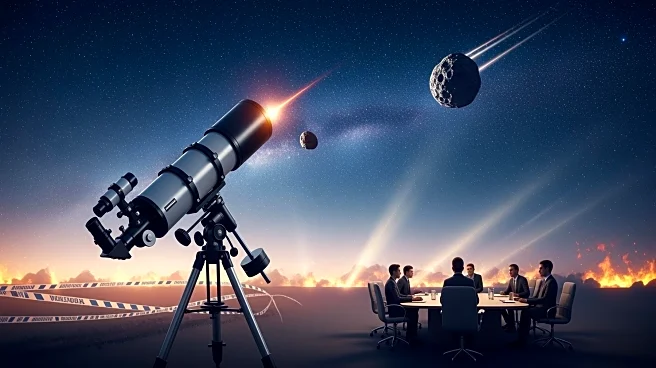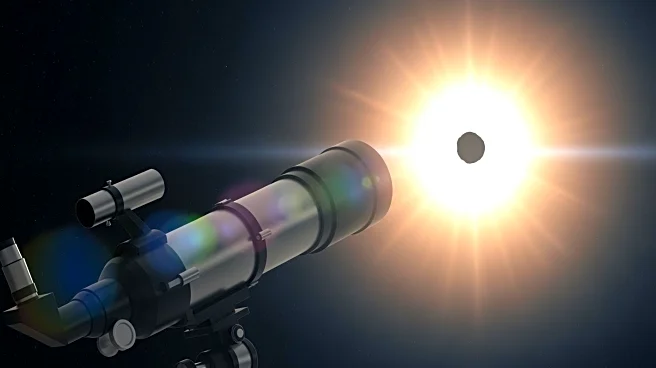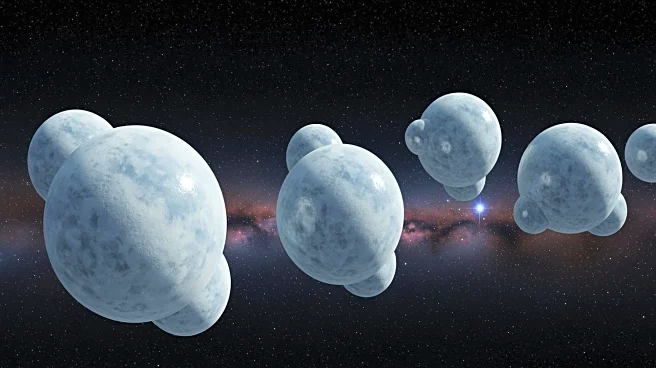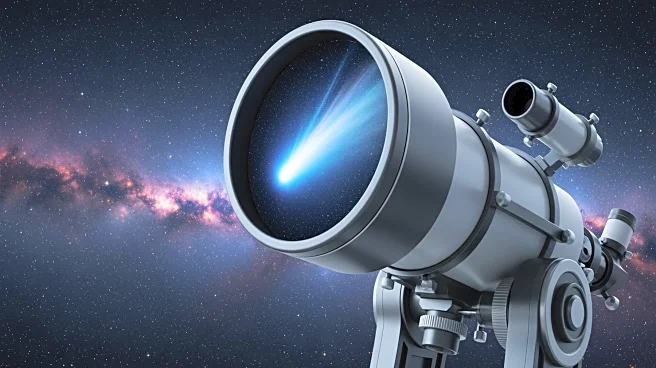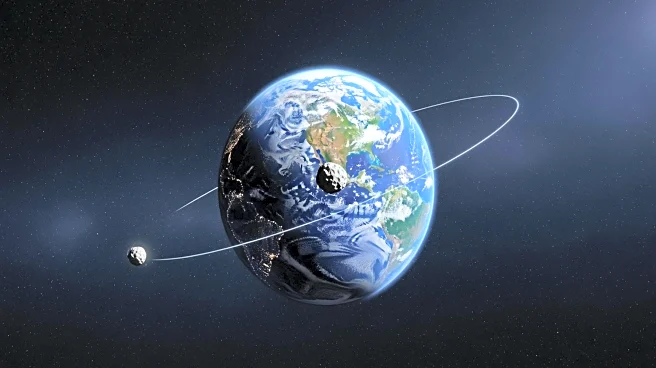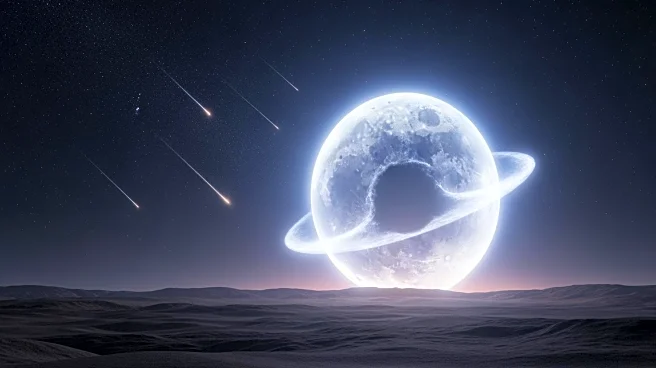What's Happening?
Astronomers have identified the second-fastest asteroid in the Solar System, named 2025 SC79, which orbits the Sun in just 128 days. This discovery was made by Scott Sheppard of Carnegie University, who
is known for his work on small moons of Jupiter, Saturn, Uranus, and Neptune. The asteroid, approximately 700 meters long, was found hiding in the Sun's glare, a challenging location for detection. Although 2025 SC79 does not pose an immediate threat to Earth, its discovery underscores the importance of identifying asteroids that could potentially collide with our planet. These 'twilight' asteroids, which are difficult to spot due to their proximity to the Sun, can only be observed during specific times of the day.
Why It's Important?
The discovery of 2025 SC79 is significant as it highlights the ongoing efforts to detect asteroids that could pose a collision risk to Earth. Asteroids that orbit close to the Sun are particularly challenging to detect, yet they can be among the most dangerous if their paths intersect with Earth's orbit. The research, supported by NASA, utilizes advanced technology like the Dark Energy Camera on the NSF's Victor M. Blanco Telescope in Chile. Understanding the characteristics and trajectories of such asteroids is crucial for planetary defense strategies, potentially preventing catastrophic impacts.
What's Next?
Further observations of 2025 SC79 are planned, as it is currently positioned behind the Sun from Earth's perspective. These studies aim to uncover more about the asteroid's composition, its ability to withstand intense solar heating, and its origins. Continued research in this area is essential for improving detection methods and enhancing our understanding of asteroid dynamics, which could inform future planetary defense measures.
